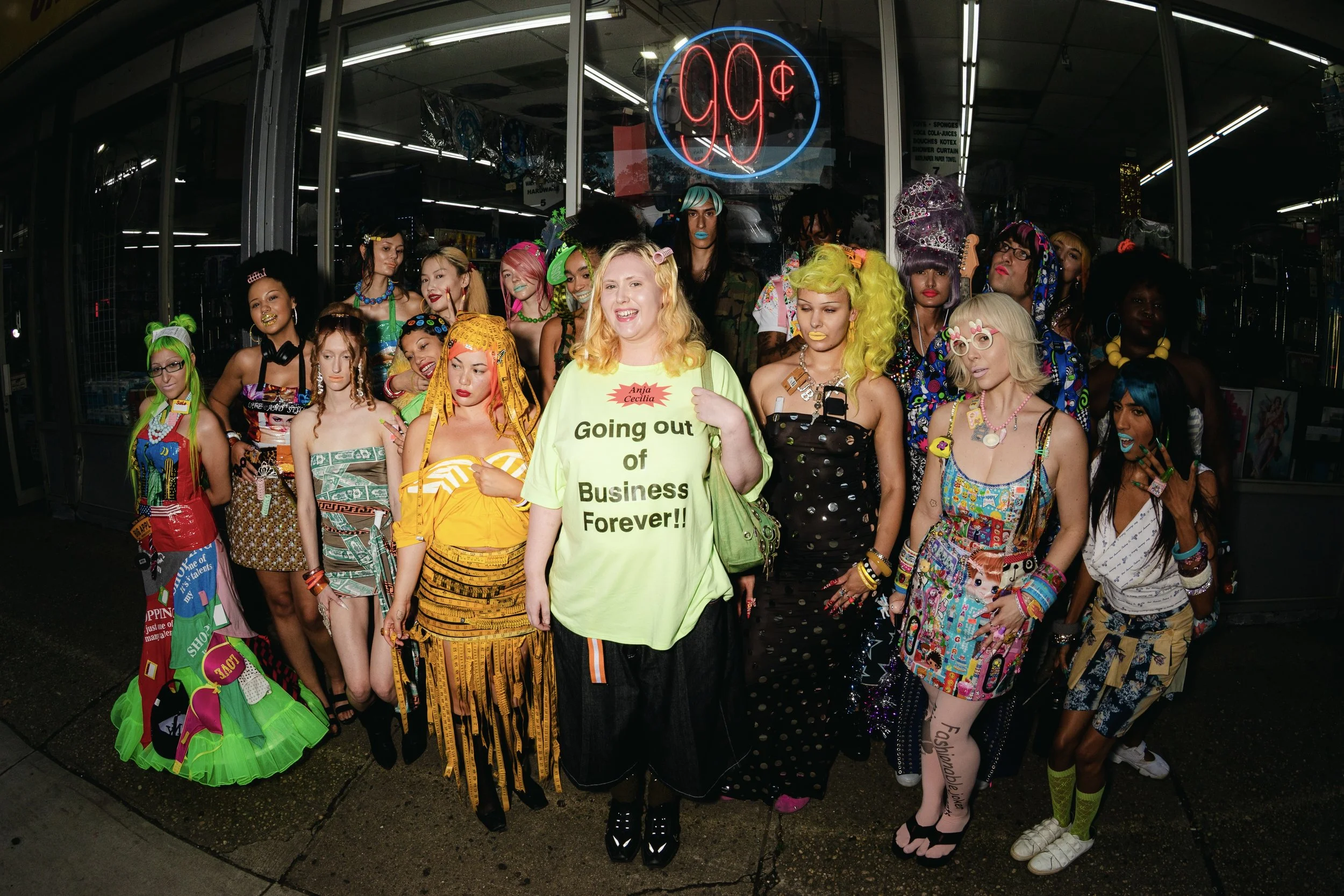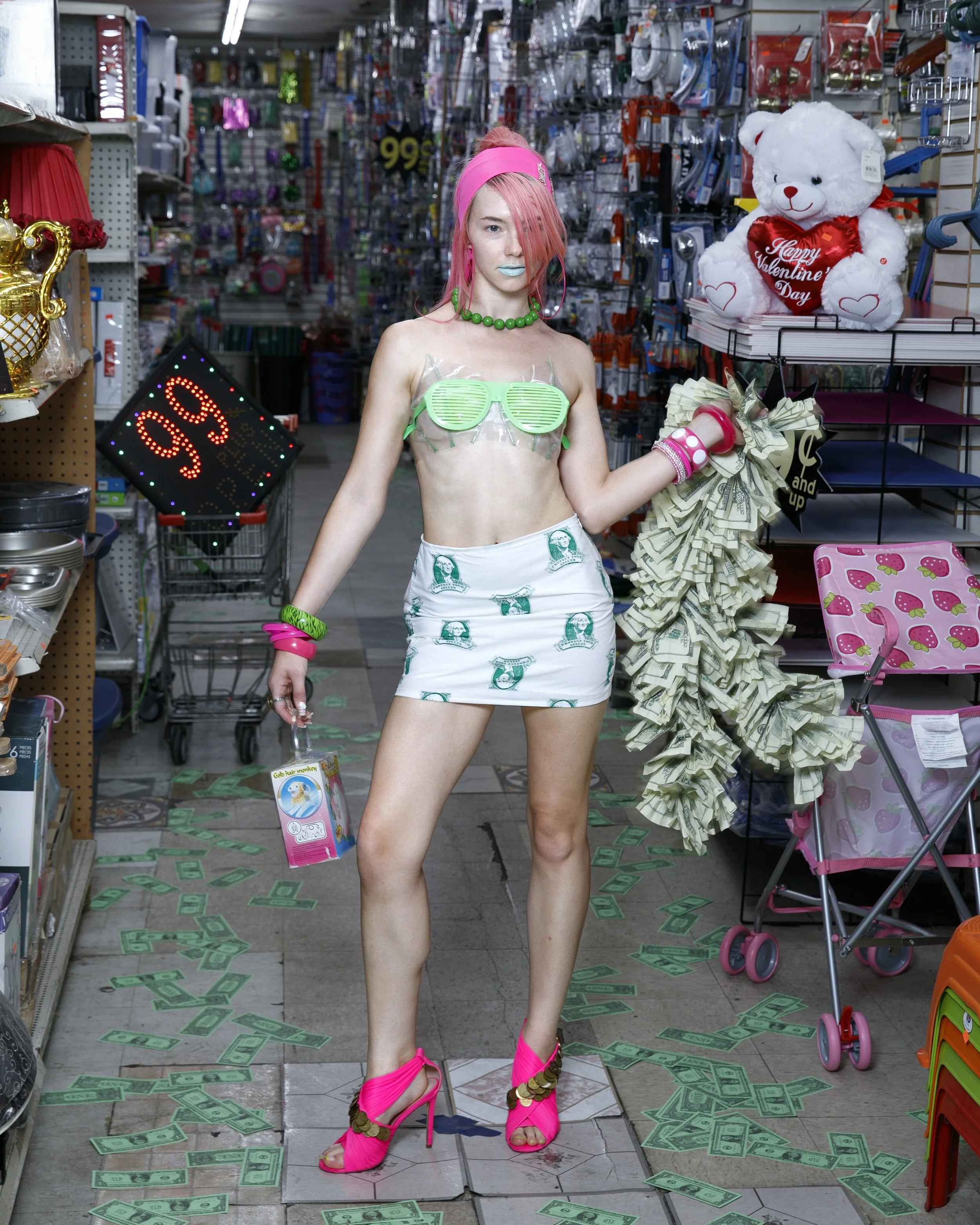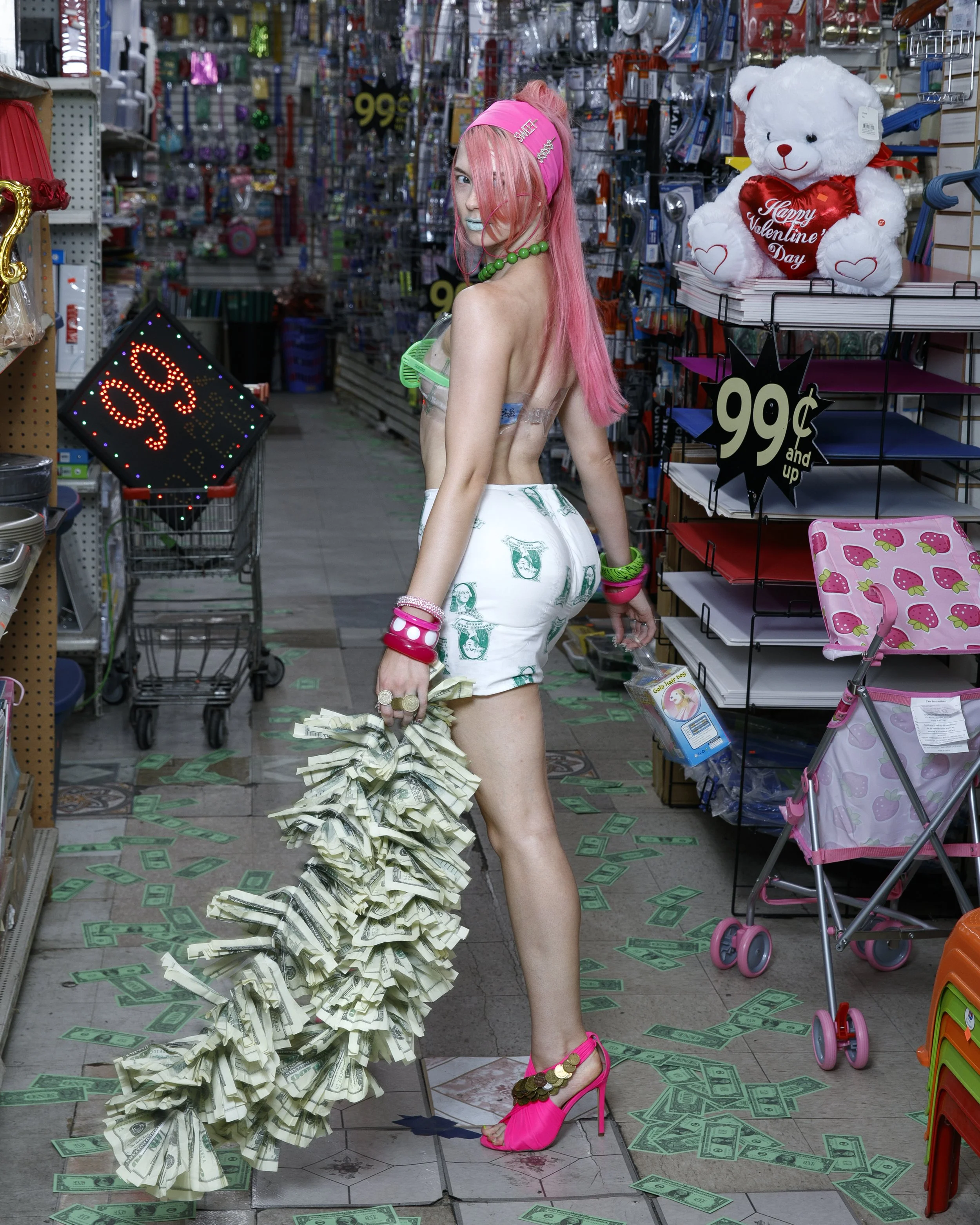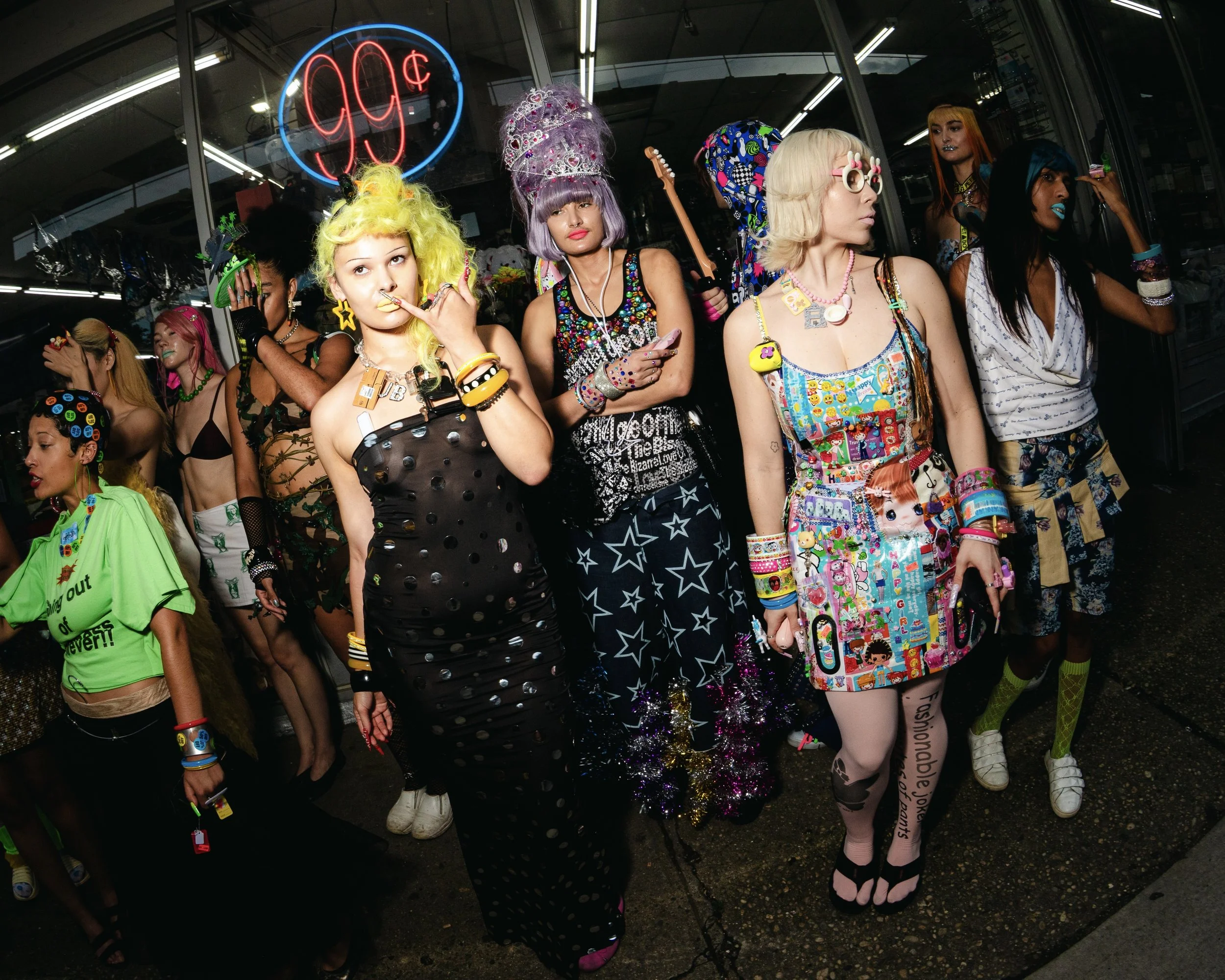Runway of the Real Ones
With contributions by Gawain Semlear
Photo by Gracie Gianoukos
Some of the most memorable outfits of our lives gestate inside of hungover mornings, stumbling through the over-lit aisles of the nearest dollar store, trying to piece together the next night’s look out of the piles of fraying ribbon, staticky plastic gym shorts, and off-brand princess costumes for children. This oddly specific and fortuitous realm served as the inspiration for New York-based fashion designer Anja Cecilia’s “Dollar Store Couture” (DSC) runway show, which took place in a Brooklyn dollar store this past July, where each model was fashioned into a distinct character with their own story. The show exhibited nineteen original looks handmade from objects obtained from locally-owned discount stores.
One model sauntered through the store, shutter shades bound to their breasts with a clear PVC bra, as if emerging from a fifteen-year-long drunken haze, with blessed ignorance of Kanye’s outspoken fascist sensibilities. This character went into the world with only five dollars to their name, with which they grabbed the shades, a tube skirt padded at the rear and printed with “protect your assets” and the dollar bills they wish they had, and neon pink heels stacked with arcade tokens, as ready as they’d ever be to face this new world (as long as they could still party in it).
Photos by Reveka Pasternak
Another model clutched a skateboard decorated with dollar store stickers, and was draped in chains hung heavy with uncanny portraits of lenticular doll-like faces that blinked as they moved, looking both impossibly young and impossibly available. They are armored against the world in thoroughly-studded pants (half metal and half printed) held up by a hot pink belt but weighed down by a wallet chain. Their love of skateboarding might have garnered them the attention of countless lovers, but their frosty blue lipstick and bulky bandaid-covered kneepads feel like talismans warding off any real chance they’d have at romance.
Photos by Reveka Pasternak (L) & Gracie Gianoukos (R)
A third model sported a haphazardly-wrapped swing coat with wheel-shaped yo-yos as buttons and a frizzy yellow wig that stood up like they’d been electrocuted. In a city so known for its ability to anonymize, to swallow up even its most well-meaning residents, this character needed to get noticed, quick. Glitter spilled out of the model’s nose, suggesting another, drug-fueled dimension to their frenetic aura.
Photo by Gracie Gianoukos
The easiest way to make a scene in New York City is to throw money around, but when that’s not a possibility, the dollar store offers a parody of riches with its abundance: a miscellany of kitsch objects pile upon each other like pancakes, and aisles seem endless under the fluorescents—one can get lost in a dollar store, and maybe that’s what some of Cecilia’s characters want.
What Anja Cecilia and stylist Ryle Ferguson have crafted in “Dollar Store Couture” is a living, breathing cosmos of hyper-specific personas teetering on the edge of parody and poignancy. Each character is a portal into an imagined life that feels eerily close to the ones we already live: full of contradiction, artifice, longing, and a stubborn refusal to relinquish glamour in the face of banality. What makes DSC so memorable is the seriousness with which it treats the camp of everyday survival. This is high fashion via desperation, where the sparkle of a rhinestone choker from aisle five doesn’t try to mimic luxury—it transcends it, and in doing so, becomes something more honest, and maybe more desirable.
Each piece in the show, however cheap, gained significance through its intent. This is the magic trick of DSC: it recasts trash as treasure not by disguising it, but by placing it at the center of a very theatrical, very human narrative.
Photos by Gracie Gianoukos
This approach isn’t happening in a vacuum. More and more, contemporary fashion turns to worldbuilding as a way to embed clothes into larger, more enthralling (and easier to indulge in sans cash) stories. Designers from Charles Jeffrey Loverboy to Emily Adams Bode Aujla to Collina Strada have embraced the theatrical, be it through immersive set design, narrative casting, or full-on character arcs. This is not to distract from their collections, but to deepen their meaning.
In a post-pandemic era of heightened self-awareness, the runway-as-spectacle no longer feels like excess; it feels necessary. We want to know not just what a garment looks like, but who wears it, why, and what kind of world they exist in. DSC leans into that desire by honoring the dollar store as a site of fantasy, self-construction, and emotional residue. The show doesn’t try to “elevate” the dollar store but treats it as a zone where couture and readymade items exist interchangeably, championing the tension between high and low.
After all, some of the most dramatic moments in our lives happen not in gilded ballrooms, but under buzzing fluorescent lights, holding something absurd in one hand and heartbreaking in the other.
Photos by Gracie Gianoukos










